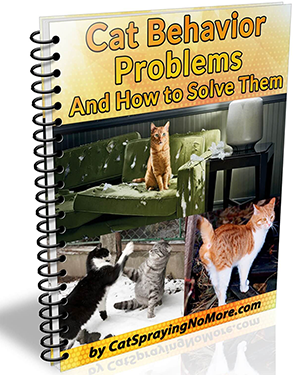Cat Adoption
The Purr-fect Pet: Why Cats Make Great Companions
Are you considering adding a furry friend to your family? While dogs often steal the spotlight, cats have a lot to offer as well. Let’s take a closer look at why cats make fantastic pets.
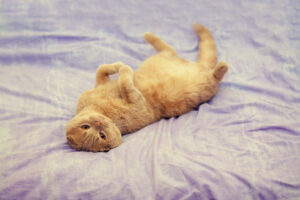
**Low Maintenance, High Affection**
Unlike dogs, cats don’t require daily walks or constant attention. They are content to entertain themselves, making them an ideal choice for busy individuals or families. Plus, when they do seek out affection, it’s on their terms, adding an element of mystery and charm to their companionship.
**Cleanliness and Health Benefits**
Cats are meticulous groomers, keeping themselves tidy and odor-free. Their purring has been linked to therapeutic healing capabilities, reducing stress and promoting relaxation. The act of petting a cat can have a calming effect, potentially contributing to lower stress levels and improved heart health.
**Companionship and Independence**
Cats are known for their intuitive nature and ability to provide comfort when needed. They make great companions for people of all ages, offering a sense of calm and stability. Additionally, their independent nature allows them to thrive in a variety of living situations, making them a versatile pet choice.
**Teaching Responsibility**
For families with children, owning a cat can be an excellent way to teach responsibility. Involving kids in the care and nurturing of a pet can instill valuable life lessons and create lasting bonds.
In conclusion, cats are low-maintenance, clean, and provide numerous health benefits. Their unique blend of independence and companionship make them an excellent choice for individuals and families alike. Whether you’re a seasoned pet owner or considering your first furry friend, a cat could be the purr-fect addition to your home.
*Resources:*
– The Joys of Owning a Cat – HelpGuide.org – Source
Maine Coon vs. Norwegian Forest Cat: Which Is the Right Cat for You?
Cats are one of the most beloved pets around the world. They come in different breeds, each with their unique set of traits, personalities, and physical appearances. Two of the most popular cat breeds are the Maine Coon and the Norwegian Forest Cat. Both of these breeds have a long history and are known for their beauty, intelligence, and affectionate nature.
But how do you choose between these two wonderful breeds? In this article, we will explore the similarities and differences between Maine Coons and Norwegian Forest Cats to help you decide which one is the right fit for you.
Maine Coon vs. Norwegian Forest Cat
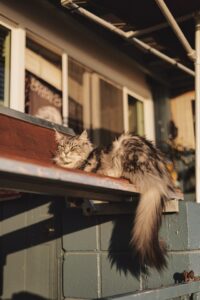
Maine Coon Picture by Photo by diego santiago: https://www.pexels.com/photo/close-up-photo-of-a-furry-cat-12032429/
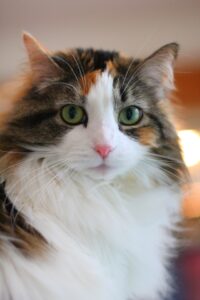
Norwegian Forest Cat Photo by Maverick F: https://www.pexels.com/photo/close-up-photo-of-a-furry-cat-10819606/
Origins
The Maine Coon and the Norwegian Forest Cat are both native to cold, northern climates, and have been around for centuries. The Maine Coon is believed to have originated in the state of Maine in the United States, where it was a popular barn cat due to its excellent hunting skills. There are many stories about how the Maine Coon came to be, but the most common is that they are a cross between domestic cats and raccoons, which is impossible biologically. Another theory suggests that they are the descendants of cats that traveled with Vikings who visited the Americas.
The Norwegian Forest Cat, on the other hand, is believed to have originated in Norway and was used as a working cat on farms and in the forests. These cats were known for their excellent hunting skills and their ability to survive in harsh weather conditions. They were also used by the Vikings to control the rodent population on their ships.
Physical Appearance
Maine Coons and Norwegian Forest Cats are both large, muscular cats, with long, fluffy coats, and a distinct appearance.
The Maine Coon has a broad, rectangular head with tufted ears and large, expressive eyes. They have a long, sturdy body with a bushy tail, and their coat is thick and shaggy, with a distinct ruff around the neck. They come in various colors, including brown tabby, black, and white. But the tail would look more like it has rings similar to a raccoon’s tail.
The Norwegian Forest Cat, on the other hand, has a triangular head with large, almond-shaped eyes. They have a long, sturdy body with a bushy tail, and their coat is thick and shaggy, with a distinct ruff around the neck. They come in various colors, including brown tabby, black, and white, and their coat may also have silver or golden highlights.
While both breeds have a similar appearance, the Maine Coon is generally larger than the Norwegian Forest Cat. Male Maine Coons can weigh up to 20 pounds, while the Norwegian Forest Cat’s average weight is around 12-16 pounds.
Personality and Temperament
Both the Maine Coon and the Norwegian Forest Cat are known for their friendly, affectionate, and playful nature. They are intelligent cats that enjoy interacting with their owners and are known to be loyal and devoted pets.
The Maine Coon is often described as the “gentle giant” of the cat world, as they are known for their calm and relaxed demeanor. They are also highly social and enjoy spending time with their owners, as well as with other cats and pets in the household.
The Norwegian Forest Cat, on the other hand, is known for its independent and curious nature. They are highly active cats that enjoy exploring their surroundings, but they also love to spend time with their owners. They are known to be playful and affectionate and are a great fit for families with children and other pets.
Health and Care
Both the Maine Coon and the Norwegian Forest Cat are generally healthy breeds with a long lifespan, but they may be prone to certain health conditions.
The Maine Coon may be susceptible to hip dysplasia, which is a genetic condition that affects the hip joints and can cause pain and mobility issues. They may also be prone to heart disease, particularly hypertrophic cardiomyopathy, which can lead to heart failure. It’s important to have regular checkups with a veterinarian to catch these conditions early.
The Norwegian Forest Cat may be prone to a genetic condition called glycogen storage disease type IV, which can lead to liver failure. They may also be susceptible to hip dysplasia, as well as a condition called polycystic kidney disease, which can lead to kidney failure. Regular vet checkups and genetic testing can help catch and manage these conditions.
Both breeds have long, thick coats that require regular grooming to prevent matting and hairballs. They should be brushed at least once a week and may need to be bathed occasionally. It’s also important to keep their nails trimmed and teeth clean to prevent dental issues.
Which Is Right for You?
Choosing between a Maine Coon and a Norwegian Forest Cat ultimately depends on your lifestyle and preferences. If you’re looking for a larger cat that’s laid back and affectionate, the Maine Coon may be the right choice. They are great for families with children and other pets and are known for their calm and relaxed demeanor.
If you’re looking for a more independent and active cat that loves to explore, the Norwegian Forest Cat may be the right choice. They are great for families with children and other pets and are known for their playful and curious nature.
Both breeds require regular grooming and vet checkups, and may be prone to certain health conditions. It’s important to do your research and choose a reputable breeder or rescue organization to ensure that you are getting a healthy and well-socialized cat.
In conclusion, both the Maine Coon and the Norwegian Forest Cat are wonderful breeds that make great pets for the right person. They have unique traits and personalities, and it’s important to consider your lifestyle and preferences when choosing between them. Whether you choose a Maine Coon or a Norwegian Forest Cat, you’re sure to have a loyal and loving companion for years to come.
Note we are bias for the Maine Coon since we are inspired by a half Maine coon cat.
Food suggestions for Maine Coon
Royal Canin Feline Breed Nutrition Maine Coon Kitten Dry Cat Food, 3-lb bag
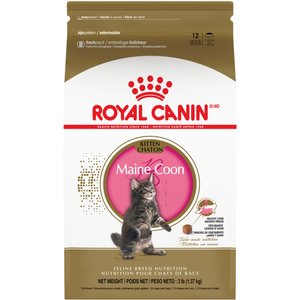
Food suggestions for Norwegian Forest Cat
Royal Canin Feline Care Nutrition Digestive Care Dry Cat Food, 6-lb bag

Also Check out Norwegian Forest Cat Adult by Royal Canin
Regardless of which cat you get a Maine Coon or a Norwegian Forest Cat you should get the following guides.
This content may contain links to products, software and services. Please assume all such links are affiliate links which may result in my earning commissions and fees.
Caring for Senior Cats
I was reading an article on Considerations Before Adopting Your First Cat which every one should read if they are considering adopting a cat. As I also read that senior cats seem to stay longer at shelters for an odd reason I was thing what it would take caring for a senior cat.
Adopting and caring for senior cats
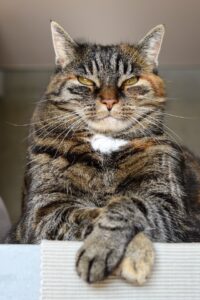
Senior maine-coon cat watching. Picture by Pixabay
As cats age, their needs change, and they require more attention and care than younger cats. Senior cats are typically those over the age of 7, although some cats may start showing signs of aging earlier or later than others. As a cat parent, it’s essential to be aware of the changes that come with aging and take steps to ensure your senior cat remains happy and healthy. In this article, we will discuss how to care for senior cats.
-
Regular Veterinary Check-ups
Senior cats require more frequent veterinary check-ups than younger cats. They should be taken to the veterinarian at least twice a year for a thorough examination. The veterinarian will check your cat’s weight, blood pressure, and perform blood tests to detect any underlying health problems.
-
Monitor their diet
As cats age, their dietary needs change. They may require fewer calories, but their diet should be rich in high-quality protein to help maintain muscle mass. Talk to your veterinarian about the best diet for your senior cat. They may recommend a senior cat food that is lower in calories and fat but high in protein.
-
Provide proper hydration
Senior cats may be prone to dehydration due to a decrease in their ability to conserve water. Make sure your cat always has access to fresh, clean water. Consider investing in a pet fountain to encourage them to drink more water. Also, try adding wet food to their diet to increase their water intake.
-
Ensure Comfortable Living Conditions
Senior cats may have a harder time jumping and climbing, and they may require more comfortable sleeping areas. Consider providing your cat with a soft, warm bed, and placing it in an easily accessible location. If your cat is having trouble climbing stairs or getting onto furniture, consider providing steps or ramps.
-
Regular Exercise
Senior cats may become less active and may not be as interested in playing as they once were. However, regular exercise is still essential to maintain muscle tone and keep joints flexible. Encourage your cat to play by providing toys that are easy to bat around or play hide-and-seek with treats.
-
Brushing and Grooming
Senior cats may have trouble grooming themselves due to decreased flexibility or arthritis. Help your cat by brushing their coat regularly to remove any loose fur and prevent matting. Also, consider trimming their nails if they are not wearing down naturally. Long nails can cause discomfort or even lead to painful ingrown nails.
-
Environmental Enrichment
Cats are naturally curious and need mental stimulation to prevent boredom and maintain their health. Provide your senior cat with plenty of toys, scratching posts, and hiding spots. Consider rotating their toys and moving their furniture to keep things interesting.
-
Watch for Signs of Cognitive Dysfunction
Cognitive dysfunction, or senility, is common in senior cats. Signs may include disorientation, confusion, or changes in behavior. If you notice any of these signs, talk to your veterinarian, who may recommend medication or dietary changes to help manage the condition.
By the way regardless of age you should still try to learn what your cat is telling you and get the break through book on the subject.

Get Cat Language Bible
In conclusion, caring for senior cats requires a bit more attention and care than younger cats. Regular veterinary check-ups, proper nutrition and hydration, comfortable living conditions, regular exercise, brushing and grooming, environmental enrichment, and watching for signs of cognitive dysfunction are all essential to ensure your senior cat remains happy and healthy. With proper care, your senior cat can live a long, healthy, and happy life.
This content may contain links to products, software and services. Please assume all such links are affiliate links which may result in my earning commissions and fees.

